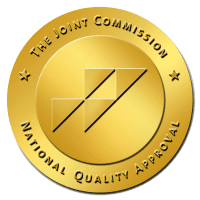A recent study showed that about 5.5 million U.S. residents use hallucinogenic drugs regularly. It also revealed that while the use of drugs like ecstasy and PCP is decreasing, others, like acid, are becoming more popular.
Acid is a dangerous drug with powerful chemical and psychological effects. Abusing it can result in adverse health outcomes, including those that can lead to hospitalization or worse.
You may be wondering, “Can you overdose on acid?” Although it is rare, overdoses do occur.
Even more dangerous, though is the increasing incidence of other illicit drugs being cut with acid. These have undoubtedly contributed to greater death rates attributed to overdose.
This article explains how acid works and its effects on the brain and the rest of the body. It will give you an idea of the risks–including overdose–involved in taking this drug, as well as some advice on recovery options for addiction.
What Is Acid?
Acid is a street name for the drug LSD, which stands for “lysergic acid diethylamide.” This substance was first synthesized in 1938 by a Swiss chemist.
LSD was used for research as well as the treatment of alcoholism, before it rose to prominence as a recreational drug in the 1960s. It was added as a Schedule 1 controlled substance in the 1970s.
Acid also is sometimes referred to as “blotter acid.” This is a reference to the way acid is often consumed: by eating an absorbent square of paper saturated with the chemical. However, acid can also come in liquid form.
Acid is a semi-synthetic drug. This means that it derives from a natural product but must be chemically modified in a lab. One of the main chemicals acid comes from, ergot, is a fungus that infects rye and other grains.
Acid is odorless and colorless, and it has a bitter taste. It is a potent psychedelic drug that is mostly used for recreational purposes.
How Does Acid Work?
Acid is a hallucinogen. After taking it, users may experience distorted colors, sounds, objects, and movements that they perceive as being real but are only created in their minds. Acid can also cause a distorted experience of time.
Acid works by interacting with serotonin receptors. These are proteins on the surface of brain cells.
Serotonin is the chemical that allows cells to communicate with the brain. Acid changes how this happens. Also, the receptors retain acid chemicals for long periods, which means a “trip” can last for 12 hours or longer.
What Effects Does Acid Have?
Beyond hallucinations, acid abuse can cause many harmful effects on the body. These include sweating, dilated pupils, dry mouth, and elevated heart rate and blood pressure.
When coming down from an acid trip, people might experience muscle aches and extreme fatigue. Depression and insomnia are also common side effects of LSD. These can persist for several days or longer.
The long-term effects of acid abuse are quite serious as well. Habitual use can lead to a condition known as hallucinogen persisting perception disorder (HPPD). This entails flashbacks to some of the psychedelic effects experienced while taking acid, including visible and auditory hallucinations.
There are treatments for HPPD, including medications to manage symptoms. These can be an important component of addiction recovery.
Is Acid Addictive?
Alcohol and powerful drugs like heroin and opioids produce intoxication. This results from a flood of dopamine in reward receptors in the brain. This can lead to physiological changes in the brain that make it crave the substances to achieve these same effects.
Since acid does not work this way, it does not have the same threat of addiction. Likewise, it lacks the types of withdrawal symptoms as these other substances whenever the user ceases taking it.
Finally, taking more acid does not achieve greater effects, like many other illicit drugs. In fact, it is the opposite. This too reduces the likelihood of addiction.
However, that does not mean acid cannot be habit-forming. Acid still impacts the brain, so the effects can be psychologically addictive.
This means that, while the body may not crave them in a way it might heroin or opioids, the user wishes to repeat the experience. This can be for myriad reasons, but acid is more likely to become habit-forming for people who use other drugs regularly.
Also, it is possible to build up a tolerance to LCD. This means that people who use it frequently need to increase the dose to achieve the same effects. This can increase the short- and long-term health impacts of the drug, including the risk of overdose.
Likewise, it means that acid is often a gateway drug to other hallucinogenic substances, especially if increased tolerance occurs. It is not uncommon for users to move to stronger drugs like PCP to achieve a “good trip.” These of course, carry their own risk of addiction and adverse health impacts.
Can You Overdose on Acid?
Overdosing on acid is rare, but it does still happen. Someone who took too much acid can experience symptoms like excessive vomiting and difficulty breathing.
It also can instigate psychosis and, in some cases, seizures, which cause loss of consciousness. All these conditions can lead to hospitalization and even death.
Associated Risks
Beyond the basic question, “Can you overdose on acid?” it is important to look at the many other dangers to consider. These include risky behavior due to an altered state, difficulty in measuring dosage, and the prospective presence of other drugs.
Hazardous Behavior
Acid can lead to poor decision-making which can be dangerous. In fact, a bad acid trip is far more common than acid overdose.
Hallucinations while on acid have led to people jumping from buildings or running into traffic. There have been incidents of people on acid, threatening law enforcement personnel. Finally, acid can lead to extreme anxiety and paranoia, which can yield an increased risk of suicide.
Unpredictable Dosage
Another risk of taking acid that can be life-threatening is the difficulty in determining dosage. Since acid comes in a liquid form and from unknown sources, a user often has no idea how much they are ingesting.
Even acid distributed on blotter paper can have different concentrations. This makes it easy to take a much higher dose than intended. Even a slightly elevated dose of acid can exacerbate all the risks already discussed.
Presence of Other Illicit Substances
The final way in which acid can be life-threatening is the most insidious. It is becoming increasingly common for acid to be cut with other substances. Depending on the additive, the unknowing user could experience a range of physiological effects.
One very common occurrence is the supplement of NBOMes, or “N-bombs,” for acid. These are extremely toxic substances that only recently emerged on the illegal drug scene. They have some of the same psychoactive effects as LSD, which means drug dealers can sell them under the guise that it is acid.
N-bombs have side effects that are much more dangerous than acid. Users who have overdosed on them have shown signs of difficulty breathing, seizures, and kidney failure. Also, the LSD-like effects, including hallucinations, are much more severe with N-bombs, which increases the danger of hazardous decision-making.
Acid Addiction Recovery
As mentioned, although acid is not physically addictive, people can have difficulty abstaining. This is almost always due to co-occurring mental health conditions, like depression or bipolar disorder.
Rehabilitation from addiction can take different forms. If you are a habitual acid user, you may require a period of detoxification before recovery can take place.
Recovery can involve in or out-patient services. In-patient care is more intense and often more effective since it removes you from the normal environment where drug use occurred and gives you all the tools necessary for successful recovery. Out-patient care can limit disruptions to positive aspects of your life, such as employment, which also can aid in recovery.
Almost every reputable recovery program will also involve cognitive-behavioral therapy. The purpose of this is to address the underlying causes of addiction. It also teaches those in recovery how to identify negative thoughts and replace them with more positive and productive ones.
The goal is to produce healthier behaviors in general but also equip people to deal with common stressors and triggers that can lead to an urge to use. Contingency management helps users reduce the chances of relapse by enhancing coping skills.
A quality rehabilitation program will be able to advise you on the best treatment regimen based on the severity of your addiction and your lifestyle. Finding the right, balanced approach is one of the most important steps to recovery.
Find Addiction Recovery Near You
Now that you have an answer to “Can you overdose on acid?” you can take steps to protect yourself or your loved one. Addressing addiction head is the first step toward achieving recovery.
At Purpose Healing Center, we have programs available at both our Scottsdale and Phoenix campuses. Our goal is to provide comprehensive yet customized addiction support plans for each person, including in- and out-patient options. Reach out to us today to learn more about the program or to schedule treatment.



